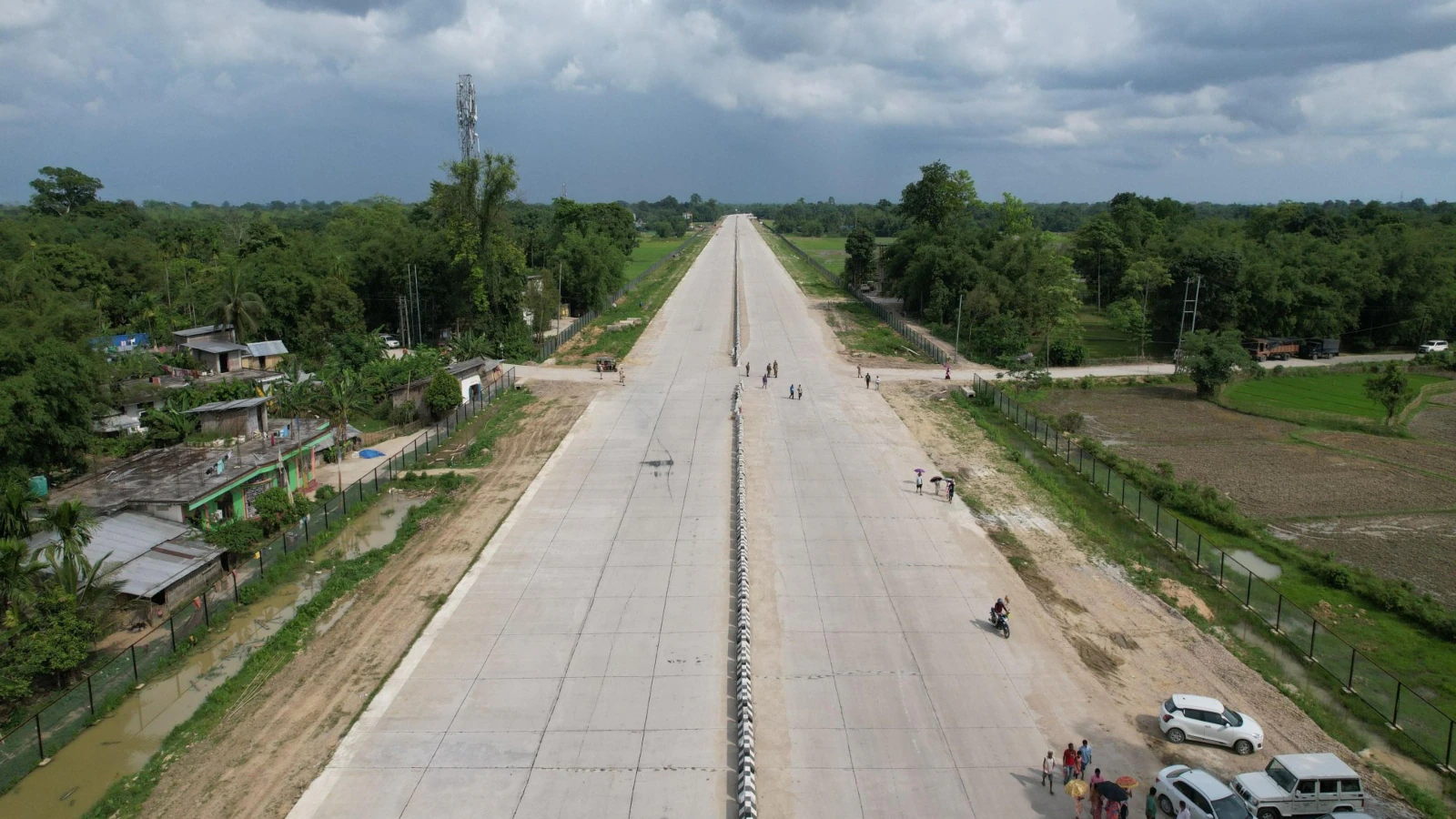By News18 Prosenjit Nath
When Assam Chief Minister Himanta Biswa Sarma announced the nearing completion of the Northeast’s first highway-based emergency landing strip, located on the Dibrugarh–Moran stretch, it signalled more than just an infrastructure milestone. It marked a paradigm shift in the strategic architecture of India’s eastern frontier, where defence preparedness, disaster resilience, and civil aviation mobility are being fused into a single strip of tarmac.
Planned to be operational by October 2025, the 4.2-km highway stretch will serve dual roles: as an emergency airstrip for the Indian Air Force (IAF) and as an auxiliary landing site for civilian aircraft. The project is being executed by the National Highways & Infrastructure Development Corporation Ltd (NHIDCL), with the IAF actively involved in inspections to ensure compatibility with advanced fighter aircraft, including Sukhois and Rafales.
What you are seeing in this picture is not just a highway; it is North East’s first Emergency Landing Facility ?
? Moran, Assam pic.twitter.com/nNsYvtw4ax
— Himanta Biswa Sarma (@himantabiswa) June 29, 2025
The idea of integrating roadways with aviation capabilities is not new globally. Germany pioneered it during the Cold War, and countries like China, Pakistan, Sweden, and South Korea have all developed road–runway hybrids. However, in India, this concept is still relatively novel, with only a few operational strips like the one on the Purvanchal Expressway in Uttar Pradesh. The Assam project, being the first of its kind in the Northeast, is thus geopolitically significant.
Strategic Significance: A Dual-Use Innovation
The Northeast is a geopolitically sensitive region, sharing over 5,400 km of international borders with China, Bhutan, Myanmar, and Bangladesh. Assam, in particular, lies at the logistical heart of this region. The Dibrugarh–Moran airstrip will serve as a forward support base for the Indian military, enabling quick deployment, emergency landings, and logistical resupply in the event of armed conflict or tensions along the Sino-Indian border.
India’s growing emphasis on strengthening its eastern military frontier—particularly after the Doklam standoff in 2017 and the Galwan clashes in 2020—requires infrastructure that offers redundancy and rapid adaptability. In this context, the highway airstrip is not merely a Plan B; it’s an insurance policy that enhances deterrence.
It is also noteworthy that the airstrip is being designed to accommodate even the most advanced fighter jets. This increases India’s operational depth in the Northeast, allowing the Air Force to launch sorties or conduct evacuations even if main airbases like Dibrugarh or Tezpur are compromised or incapacitated.
Civilian Benefits And Disaster Response
Beyond military utility, the highway airstrip offers significant civil aviation and disaster response advantages. Assam and the wider Northeast are prone to devastating floods, landslides, and connectivity breakdowns. In such scenarios, the ability to land aircraft and helicopters on an emergency strip could prove lifesaving.
The state government’s plan to install helipads every 50–100 km along the highway complements this logic. In flood-hit or inaccessible zones, helicopters are the only viable means of rescue and relief. Pre-built helipads ensure that helicopters can land safely without delay or danger. They also enhance the state’s readiness for mass evacuations, airlifting essentials, and bringing in medical teams during natural disasters.
Moreover, from a civil aviation standpoint, this strip serves as a diversionary runway. In case of adverse weather or technical failure at Dibrugarh Airport, passenger flights can make emergency landings on this highway stretch, potentially saving hundreds of lives.
Regional Development And National Integration
Another understated benefit is the symbolic and practical message this project sends about India’s commitment to the Northeast. Often treated as peripheral in Delhi’s planning imagination, the region is now becoming central to India’s “Act East” policy. With economic corridors like Bharatmala and the expansion of national highways, the integration of civil and defence infrastructure accelerates regional connectivity, investment potential, and strategic deterrence.
Projects like the Dibrugarh–Moran airstrip indicate that the region is no longer an afterthought. By blending infrastructure development with national security imperatives, the government is creating a new template for growth with resilience.
The Road Ahead: A Model For Other States
With two more emergency airstrips approved—at Boroma Tihu in Lower Assam and another between Nagaon and Lumding—the vision is long-term. If executed efficiently, Assam could become a model for similar infrastructure in other vulnerable or border regions like Arunachal Pradesh, Sikkim, or even the western stretches of Rajasthan and Ladakh.
The institutional collaboration between NHIDCL, the Ministry of Defence, and the Assam government also sets a precedent. Multi-agency coordination is often the Achilles’ heel of India’s infrastructure projects. That this one is progressing, with trial landings expected as early as September 2025, is a rare administrative success story in India’s federal structure.
In conclusion, the Dibrugarh–Moran highway landing strip is more than a patch of reinforced concrete; it is a symbol of strategic clarity. In one sweep, it addresses India’s military preparedness, civil aviation safety, and disaster management. It binds together national security with civilian needs in a region that often falls victim to both geopolitical friction and natural disasters.
Chief Minister Himanta Biswa Sarma’s vision, if executed fully, could create a critical infrastructure loop that not only strengthens the Northeast’s resilience but also underscores India’s seriousness about securing its border states—not just with boots on the ground, but with wheels on runways.
The writer is a technocrat, political analyst, and author. He pens national, geopolitical, and social issues. His social media handle is @prosenjitnth. Views expressed in the above piece are personal and solely those of the author. They do not necessarily reflect News18’s views.
